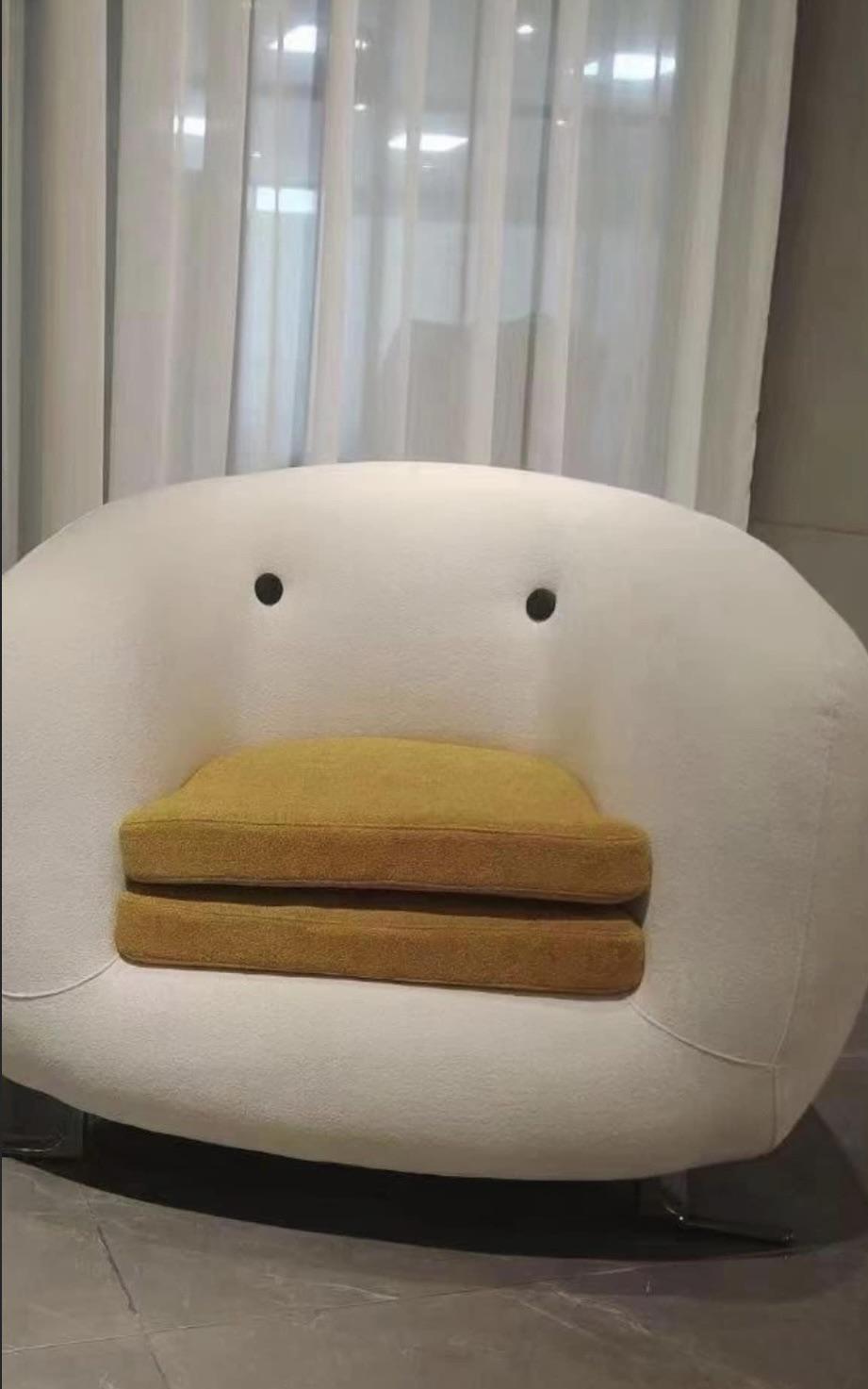This isn’t just mildly interesting. We should be considering methods of air cooling that do not use any carbon in order to avoid aircon usage becoming a contributor to the climate problem as things get hotter and hotter.
I agree with you that we should be exploring alternatives, but aircon is extremely energy efficient for how much thermal energy it moves (reaching 400% efficiency in some cases) . The problem isn’t aircon itself, but what is being used to power it (coal/natural gas power plants)
In fact the technology behind aircon can be expanded into a heat pump to both heat and cool, being more efficient than electro-resistive or gas heating. There’s even water heaters that will actually cool the area they’re in and use the heat they gather from the space to heat the water.
Technology Connections has a great series of videos that go in depth on both heat pumps and aircon.
Yeah, “air conditioning powered by solar/wind/hydro” can feel like it’s one big Rube Goldberg machine to make air cool, but the reality is that it comes together to make something that can scale really easily. I can’t imagine coming up with a design like what’s in OP for an apartment complex or condo building.
Source: just made it up, but also a Technology Connections fan. All that’s to say, feel free to correct me with a little data
They actively use this design in large buildings (with a modern twist). Its known as a chilled water system: https://hvactrainingshop.com/how-a-chilled-water-system-works/
Or you have ones that do not run at all during the day, and only chill/freeze the water at night on excess power/cheap power: https://www.buildinggreen.com/news-article/making-ice-night-cool-buildings
The second system I linked would then let the ice slow melt over the day as its way of actively chilling air passing through its exchanger.
These systems work by chilling water instead of air, which has a much higher heat capacity. Meaning, it can accept much more thermal energy per unit mass before raising its temperature by 1 kelvin. You are able to build a single, very well designed, and efficient refridgeration unit that can provide HVAC services to up to multiple high rise buildings. This reduces waste and reduces the usage of coolant/refridgerant.
This system can be reversed in the winter (heating the water instead of chilling) with geothermal heat, solar heat, or if no “green” options are readily available, natural gas direct fire heat can be extremely efficient compared to electric coil
One of our data centers uses a building with a man made “lake” in it. They blow the air across the water and use that air to cool the building and its systems. Seems to work fine.
The #hvactrainingshop.com link is dead to me (it’s in an exclusive walled garden not openly available to all people [#Cloudflare]). I could not find a replacement link. If anyone has a better source, plz mention it.
It scales pretty easily. A Yak’chal is basically an early version of a cooling tower. And they regularly get used for bigger house complexes.
400% efficiency is good, but it’s not better than the ∞% efficiency you get from something that doesn’t require fuel input to begin with. (I’m pretty sure the Technology Connections guy would agree on that point.)
If nothing else, think of it this way: even if you still want to use air conditioning to make sure you get all the way down to comfortable room temperature or whatever your target is (which a Qanat, although able to achieve a >15°C ΔT, might or might not be able to do reliably), it’ll still give you a big head start and greatly reduce the amount of energy needed. It’s a lot like using a ground-source heat pump instead of an air-source one. What’s not to like‽
Sorry my point wasn’t that we shouldn’t explore other options to use instead of/in tandem with A/C. I was entirely pointing out that the use of an AC/heatpump is by itself, in absence of the context of what is used to power it, a non issue as its one of the most efficient electric heating/cooling technologies we have.
Wind catchers could be, and likely are a great technology to adapt for wider use, though I can’t speak to that, I’m not an HVAC engineer.
Can you explain 400% efficiency?
IIRC for every watt of electricity, 4 watts of energy get moved from the inside bit of your AC to the outside unit
Sorry, my notifications have been messed up because of the lemmy.world issues! Some other people have already answered but I’ll still reply :)
A heat pump’s efficiency is measured differently than that of a gas furnace.
The actual unit for heat pumps is the Coefficient of Performance (CoP). This measures the power input (electricity) VS the power output (heat). A “400% efficiency” as I put it, is a CoP of 4, meaning that for every watt of power used, 4 watts of heat energy are moved. As some other people pointed out, depending on the quality and technology of the heat pump and the interior/exterior temperature, the actual range of a heat pump is a CoP of anywhere from 2-5.5 (the theoretical, perfect maximum is 8.8). The efficiency of the heat pump does dip as the temperature of the region it’s pulling heat energy from lowers, there’s less energy available to move, so it has to work harder. This is why heat pumps in regions with especially cold winters have what’s usually called “emergency heat” which brings us to…
Electrical heating. This works by pushing electricity through a wire to heat it up. Directly turning electricity into heat. Electrical heating always has a CoP of 1 (terms and conditions apply). For each watt of electrical power consumed, 1 Watt of heat energy is produced.
Finally we have gas heating, which is still the only option for some areas for various reasons. Gas heating efficiency is not measured with CoP but instead with Annual Fuel Utilization Efficiency, simply a number that represents what % of the fuel burned is actually turned into useful heat energy. I’m finding AFUE ranges of 76-97% as a general range for modern furnaces. If a furnace has an AFUE of 90%, that means that when it burns an amount of fuel representing 100 units of heat potential (I’m not using a unit, BTUs confuse and terrify me) then 90 of those units will be turned into usable heat, and 10 of them will be waste, whether that is heat that leaves via the chimney or is simply unburnt fuel.
TLDR: 400% means 4x more energy is moved than is used, I apologize for the wordiness, I find this stuff rather interesting
What the other guy said. It’s down to the fact that you aren’t actually heating/cooling down a room, you’re just moving the heat already there around. E.g. in winter, instead of producing your own heat with electricity, which is 100% efficient, you take heat from the outside and put it inside, using a lot less energy in the process than if you were to create the heat inside of your home.
Though I’m not sure if it’s that efficient, I think I heard it’s more around the 150-200% mark, but I’m not sure.
I think I heard it’s more around the 150-200% mark
Most cheap air conditioners have COPs (coefficients of performance) around 3.2-3.5, which means 320-350% efficiency. In real world conditions, the best systems reach 4.5, though the theoretical limit is about 8.0.
3.2-3.5 is also on a good day. It might not be as efficient when the outside temperature differences are further away from your thermostat setting inside, though if you have a geothermal setup, then you’ve got peak efficiency year round.
This would be a great idea if you want everyone in that building to file humidity complaints every single day. Air conditioners work by using mechanical work (compressor) to exploit evaporation in order to pull heat from one location to another and exhaust it away, in turn cooling the first location (this could be air, water, etc.)
This system works by using ground temp water as a heatsink to suck heat out of the air passing over it. When it does this, it humidifies the air. In the desert…who cares? In an office building…who cares? Every single worker who is stuck there all day
If you’re saying we need better systems than the AC unit you grew up with, fear not! Many office buildings have been moving away from it (same with other large venues) they use a chilled water system. They use the best of both these systems to get WAY more performance out of way less wattage. You only need a fraction of the cooling power with a chilled water system because the water can absorb much more heat per unit mass than air and can be sized to never run during the day, but only at night when the grid is least in use
AC unit you grew up with
Lmao grew up with? Most of us have never used AC at all in europe. Here in the UK no homes have AC. The issue is that people are installing it now because of climate change and the result is massively higher energy use.
Not necessarily in your house. I’m talking about the design of the units from when you were a child (Many public buildings in the EU have AC regardless of houses not having it). AC was invented in 1901, and has come a very long way since then, and we have begun combining it with old principles to extract the best of both solutions
Combining modern refrigeration/cooling techniques with well designed passive systems that exploit material properties (Heat capacities, transfer coefficients, etc.) to their advantage is the future of HVAC. It started with CFCs and knowing we could exploit their boiling point with mechanical force to chill air beyond the outside air temperature. Who knows where science and engineering may take us next!
Cooling a ware house, lecture hall or mall is very different from cooling an apaprtement building. In particular because most of the former have been designed with AC in mind.
Who knows where science and engineering may take us next!
Not beyond the hard limits of physics. You are not going to retrofit an appartement building built in 1900 or 1970 or 2000 for that matter with an efficent heating/cooling system without major rebuilding.
People in the UK are installing air cons, because most houses are very bad and have no insulation.
This is not true? L1A, L1B, L2A, and L2B exceed american insulation regulations by a huge amount, and they exceed the EU regulations as well. I did some roofing once upon a time.
Most houses in the UK are not new builds, that’s the issue.
Some US states solve this by making it illegal for a roofer to re-roof an uninsulated roof without adding insulation.
Obviously, you use the tech in the situations it’s appropriate for. If your office building happens to be in Phoenix, AZ, then a qanat might be a pretty good idea!
https://www.youtube.com/watch?v=5zW9_ztTiw8 Have you seen this? Seems like the next big thing in AC is just around the corner :-)
I had a crazy thought. What if you used depressurization to cool interiors?
Not as in depressurize the room and potentially kill the people inside, but in a way similar to soundproofing where you create an airtight gap in your walls, depressurize it to create a partial vacuum and effectively restrict both heat and sound transfer. That way it would be much easier to control internal temperature.
The only two problems I can see with it is expense (pumping air out of the gaps between your walls could be pricey), and the potential of explosive repressurization if something were to break the wall.
Wall isolation is pretty fine as it is, main weaknesses are windows and thermal bridging.
We still have the issue that a perfectly isolated house will need to lose the heat created by humans and electric systems, so actual cooling is required.
And how do you get fresh air in? Also the problem of heat transfer is never by gaps in the walls, at least not for buildings in western and central Europe. The problem is heat conduction through the window panes. And that is with isolated windows already. Also it is impossible to get a brick wall air tight. Leave alone you create a great environment for water to leak in and damage everything.
A building needs to be able to “breathe” in order to get rid of the humidity that is generated inside.
I would not explode, it would implode.
deleted by creator
A modern home ACs can only cool about 20f below the outside temperature. 50c to 35c is 27 degrees so that’s pretty damn good for a fancy unpowered swamp cooler
Yeah, the thing is the “unpowered” part. Look how much energy an AC chugs to achieve that cooling. This tower uses wind power to do it’s thing.
The AC is also small compared to a literal building with a sewer underneath and doesn’t require a windy day. Trade offs
well technically it is powered, just directly by wind and water kinetic energy, probably(?) much more efficiently than if it had been converted to electricity first
Do we know it’s more efficient? Has anyone done the math?
Are you joking?
No, I’m being genuine. It’s theoretical and all, but if you were to put up a windmill in the same spot instead of a tower, it’s possible traditional air conditioners would be able to cool the building to the same degree while also providing surplus electricity. It’s also possible that you wouldn’t, and I don’t know the answer. It would also be interesting to compare it in different ways as well, like rather than asking “If a windmill was here” we could ask “The energy removed from the wind by the tower”, because that would indicate scalability problems if one windmill was indeed able to cool one building, but maybe 100 wouldn’t be able to cool 100. All hypothetical, but air conditioners/heat pumps are actually very efficient, so it’s possible an active design could be more efficient than a passive one in this situation. At least, until someone does the math
Another thing to note, to your point, is that a windmill breaks down and requires energy to repair. These wind towers in Yazd are still there and doing the same thing from hundreds of years ago
Exactly, I have no idea. The “probably(?)” in my comment should have been a “maybe,” probably maybe.
AC really doesn’t consume that much if designed and sized properly. It’s nothing like the energy consumption of standard heating. The problem is all these people going out and buying the cheapest floor unit or undersized window unit they can find, then the wheezing thing just sits there chugging 100% of the time because it can’t keep up with their space. That’s super wasteful.
What’s your source for this? It routinely gets over 100 here and buildings aren’t 80 degrees inside.
We’re talking celsius, I hope for your sake it doesn’t routinely get to 100 C where you are. :)Edit: The user actually said 20 F, I got confused by the mix of units. “50c to 35c is 27 degrees” didn’t make sense to me, but I figured I’d let it slide. No idea what’s going on here. :)
deleted by creator
Yes, that sounds about right - the relative effect of the tower probably depends a lot on various factors like how windy it is, if extreme heat occurs only for a day or if it has been ongoing so that the water under ground is heated as well, etc.
These comments were in response to @Gangreless, who stated that a modern AC “can only cool about 20f below the outside temperature”. I didn’t catch that it was fahrenheit first, and now that I know I am happily backing off rather than having to think in terms of freedom units.
They’re full of it, that’s it. Maybe in their house which lacks sufficient insulation. Heat pumps (i.e. air conditioning) are/is extremely efficient at moving heat around, there’s not really a practical limit on it, particularly if you go geothermal.
20 degrees is just a rule of thumb most ACs have a specific temperature change they’re designed to do. You can go past it, that’s just what the intented to do and it might not work as well or be able to do it. Fwiw I’d always heard 30 degrees farenheight for most window units. Had an hvac guy explain it to me years ago but fucked if I remember how it works
E: not sure why I’m getting downvotes this is like a very common thing. Google it https://frederickair.com/home-comfort/reduce-the-stress-on-your-ac-with-the-20-degree-rule/
pretty sure 50c to 35c is 15 degrees
I wonder how he got his number, it makes no sense.
EDIT: oh, he just randomly mixed °C and °F, because why not…
Fucking Americans
It’s the Mars Climate Orbiter all over again.
50c is 122f, 35c is 95f so he went 50c-35c = 122f-95f = 27f because why the fuck not.
That’s just not true, a modern home can be at 70f or below when its 110f outside. Air comes out at 50-55 even at those outside temps.
What do you mean modern AC can only cool by 20F?
I’m in Florida and it’s routinely 95-98F outside. My AC is set to 65F.
Did you mean 20C? Either way, that’s also false. AC units are limited to their rating and BTU. Many may not cool below 60F, but there’s no delta limit.
Are you my brother? Whenever I go to his place I feel like I’m going to get hypothermia lol
Heat pump doesn’t do that for us. We set it at 78-79f in the summer and it feels cool enough & keeps the house from molding.
Evaporative systems like the one pictured only work in the desert though. So if you have lots of water, it’s humid and you can’t use evaporation to cool, but in places you can use evaporative cooling, water is scarce. It’s still very cool tech, and everywhere can benefit from more intentional design of buildings.
Your heat pump will definitely do it, it’ll just take a long time.
The 20 degree figure everyone is throwing around is actually supposed to be the difference between the return air temperature and the supply air inside your home
If you have 80 degree air in your house, 60 degree air should be coming out of your vents. Once the 60 degree air has cooled down the house to 70 degrees or so, 50 degree air should be coming out of your vents. And that’s about the theoretical limit for home air conditioning, as anything lower means the cooling coil is below freezing and will get damaged by ice, there’s usually a safety switch that prevents things from getting too cold.
Now the outside coil needs to be hotter than the surrounding air to actually push that heat out of the coil and cool off. Most places around me are designed for a 95 degree summer day, so will have a refrigerant temperature of about 120 degrees, in order to move that heat. Your compressor needs to be able to compress the refrigerant from your cooling coil until it’s about 30 degrees F hotter than the outside air. The hotter it is outside, the harder it is on the compressor. But it will eventually do it if you let it run long enough. Whether or not you want to pay for all that electricity is another thing entirely.
ok, but the cost of building a quanat is still pretty high and is not trivial to achieve.
Can’t have water flowing everywhere in a country for this to work.
Most countries in the world quite literally have water flowing everywhere already.
But don’t “swamp cooling” systems like the one in the OP not work well in humid environments? Sure, I have running water at home, but I also live in an incredibly humid climate.
I was more imagine something like the opposite of a district heating system and then using colling ponds or towers to disappate the heat from the system…
Don’t you have water to drink at home? Or in the bathroom?
Modern plumbing uses pressurized pipes that are completely full of water, and can thus flow uphill, as long as the elevation gain doesn’t exceed the head pressure from the water tower or pumps. That makes such pipe systems relatively cheap and easy to build.
In contrast, qanats require large conduits with space above for the air to flow through, using open channel flow. That means the entire system needs to be designed with a gentle downhill monotonic slope. That’s doable (the wastewater and stormwater sewer systems are designed that way, for example), but it’s more expensive and would require a lot of re-work if you wanted to convert over the existing water distribution system.
You’ve got a lot of great replies on how you’re a wrong. But it is even simpler - your freezer works the same way as air con. And it’s at -18°C even if your room is at +35°. That’s all you need to know about air cons and their capabilities.
And get it has way more upvotes than down, just like reddit.
Reddit is sipping here at a rapid pace…
deleted by creator
10 degrees is incredible though.
These days in Yazd the average warmest temperature in July is 40 degrees, so if what you’re saying is correct they’d be able to cool it down to a liveable 30 degrees even in the warmest part of the day. And at night temperatures still dip to 26, so the indoors temperature probably wouldn’t quite reach 40 even without this system. So it might make the difference between 40 degrees outdoors and high 20s indoors, which is fantastic.
Would be interesting to know if average temperatures got up to 40 in the summer around the time they were built as well, or if average temperatures in the region have been rising.
And what wind strength is required to achieve 10C decrease
I do wonder what the humidity is. The drawing shows that the new air is mixed with air coming from the water canals below which I assume is very humid.
Looks like its essentially a swamp cooler.
So I wonder how the 30 with humidity feels compared to 40 without.
Im now at a 32 but with the current humidity it feels like fucking 38!
Well, Iran is mostly a desert so I assume the air must be very dry.
That would be another benefit of having the water underneath evaporating up, increasing air moisture.
Oh man, I can’t believe ancient physics powered cooking techniques weren’t as efficient as the electrically powered cooling that we have today, those idiots
Might not be a shivering 16 Celsius inside, but if it’s the difference between dead and alive then it’s probably good enough.
What a bunch of idiots! They should’ve just installed AC units.
I hope that was a sarcasm, if so, add /s.
I think at some point the /s isn’t needed
Muricans and their need for /s…
It’s the internet, you never know. In person, by how the person behaves, you know if he’s being sarcastic or not. On the internet, not so much. It’s just text and I’ve seen people who were quite serious.
Iran’s traditional desert architecture masterfully navigates extreme temperatures through a combination of smart design and local building materials like mud-brick or adobe, which possess low thermal conductivity similar to sand. The thick walls of these houses act as a thermal mass, absorbing the intense daytime heat and slowly releasing it during the cooler night, regulating temperature swings inside the dwelling. This principle, paired with the utilization of design features like wind towers and qanat systems, helps to maintain a comfortable indoor climate. Some structures are even partially or completely built underground, using the earth as a natural insulator and benefiting from the surrounding cool sand. Consequently, it’s this strategic interplay of materials, design, and the desert environment that enables these homes to remain cool during scorching days and warm during chilly desert nights. This is a gross oversimplification of thermal dynamics but it’s the gist of it. It would be quite comfortable inside is what I am getting at.
35 is livable while you would be cooked alive in 50
You can literally go there and witness these for yourself. It works. People live in Yazd right now in these old buildings. Newer constructions have air conditioning because building huge thermal mass retaining walls out of mud bricks is expensive. They keep ice all winter in buildings there from a thousand years ago cooled like this.
Wikipedia claims “greater than 15 °C.” Besides, even if you supplement it with air conditioning, that’s 15 °C less ΔT worth of electricity you have to pay for.
There is a note where I work that says the AC will not cool lower than 10C below outside to save on energy…
I love passive systems. The more passive the better.
deleted by creator
I assume the water here is doing the work. I didn’t say anything about a closed system, just passive. Maybe that doesn’t count as passive, I don’t know physics all that well.
The person that replied to you is probably being scientific-literal and obnoxious. I understood what you meant just fine. :}
I wouldn’t call it obnoxious, it’s just pointing out that they are using terms that don’t align with what they stated. If nobody ever mentioned the difference, how can they ever learn? Not saying everyone needs “taught” but it really didn’t seem malicious like you seem to believe
The water does not perform work in this instance.
I do not think you’re trying to say the water “does work” in the physics sense, but to clarify, the water is just a large heat sink that has a much higher heat capacity than air. You can heat the water with air (which in turn cools the air), and that water can hold MANY times the heat (per unit mass) that the air can. Water also has a higher thermal conductivity than air. Allowing it to absorb and pass heat very well. This water is in the ground which also acts as a massive heatsink.
The air passes heat to the water which then passes the heat to the ground effectively cooling your air feed. A quick look online says current soil temp in Iran 21 inches deep is 35C or 95 F. That is your lower temperature limit. It’s physically impossible to become colder than the soil temperature (in this instance, as that is your lower temperature bound for heat transfer, in reality you wont even get there, because your driving force for heat flow is gone at that point) without putting in mechanical work (which is what a compressor does in your air conditioner) to compress your cooling fluid so that it may be evaporated repeatedly to exploit the tranfer of heat into an evaporating substance
Why only 21 inches? Soil temps aren’t stable until like 6 feet down, and then it’s closer to 12 C.
That is the deepest depth I could find being actively tracked on the website I ended up on. I did not wanna do a deep dive into “great” average soil temp data lol. If you have a good source of data I will gladly change my comment to include the updated numbers. I wanted to say the average soil temperature at depth is ~50-55 degrees F, but I hopped online to make sure that was not a number that I know to be true due to where I live. Good to know that its roughly 6 feet where it stabilizes
If you go down deep enough the earth temperature is stable at 12 C. But I’m pretty sure that’s like thousands of feet down. Geothermal rigs drill 500+ meters (1600 feet) down. Having a hard time finding a source on the stable earth temp though.
I mentioned 6 feet because it’s well below the frost line where I am, but I guess in that part of Iran they probably don’t have to worry about that.
Mostly I was just wondering if you had found something on how deep those waterways were actually built.
deleted by creator
These things are still there and if you aren’t an American you can go to them. They are very nice and cool inside.
The wind provides the work here. Wind and air flows.
Passive system doesnt mean u cannot play with thermodynamic laws, understand them and then cheat them (like they did) to make your passive’s system works.
Smart vs Facility (and the scramble who go with it)
Smart vs Facility (and the scramble who go with it)
My dude, I have no idea what you’re trying to say here.
Oh sorry, i meant “the destruction” bound to the facility by you know, capitalism. Because in my imagination an complex system would need more resources than the passive one, to be made.
Is it clear now dude ^^ ?
deleted by creator
I’ve read that these wind catchers were used to keep ice frozen in ice pits during summer.
https://en.m.wikipedia.org/wiki/Yakhchāl
Fun fact: Ancient Persia had ice cream like desserts enjoyed year round.
Amazing - I had no idea that anyone was making ice in the desert in BCE times. The wikipedia article seems to indicate that they did a lot of storing of ice in the Yakhchal structures - but it is confusing as to how they made it. It seems like they either gathered the ice from the mountains, or made it in outdoor shaded “ice pools” that were situated next to the Yakhchal. Surely the ice required winter desert temps to form? Otherwise how would the thermal mass of the ground ever get cool enough to allow ice to form, even with the magic of physics? The permanent shading helps, but year round-ice making surely wasn’t a thing, was it?
Seems like the ice pools were used for year round ice making at night. See the section on “Nocturnal ice making in early India and Iran”: https://en.m.wikipedia.org/wiki/Radiative_cooling
Your link is broken
Works for me 🤔
Works great 👍
It’s called evaporative cooling and it’s quite potent since water takes enormous amounts of energy when changing states. It takes around 5x the energy to convert 100°C water into 100°C vapor than it takes to increase temperature of said water from 0 to 100°. This energy has to be taken from somewhere and that is from the environment, dropping the temperature as a result. Problem with these is that the humidity of the air increases. Not much of a problem in desert, quite a bit problem in other places.
Here’s a great video explaining science behind evaporative coolers and how it can be modernized. https://www.youtube.com/watch?v=R_g4nT4a28U
Just wind tunnels without water, I agree with you.
deleted by creator
Wind powered swamp cooler. Basically a humidifier, but it does lower the temperature. I’ve heard people call swamp coolers air conditioning, so I don’t think it’s wrong.
No, calling swamp coolers air conditioning is definitely wrong.
If it’s 100% humidity in your room, the swamp cooler is going to do absolutely nothing, but AC will cool it down and can even dehumidify a bit if you run it enough.
Swamp coolers are awesome, but they only work in dry climates unfortunately.
I think the areas these were used in were fairly dry so they worked like swamp coolers.
No, it’s a swamp cooler, which is still used today in drier climates. This is a desert, so yes the air is not humid, and yes the water is cool because it’s underground. Stop being so pedantic.
deleted by creator
On the point of calling eachother names, you two are acting like redditors.
Now you should really feel insulted.
deleted by creator
The water doesn’t actually have to be all that cool for swamp coolers, because it’s the evaporation that cools the environment and warm water actually evaporates quicker.
LOL Your comment makes it seem like you don’t think that it couldn’t possibly work, except that these things are still there and you can go visit them right now and feel how cool it is inside the buildings.
Lotta old Victorian homes and factories from that Era did the same thing (without water obviously just a big tower to catch the wind). More like an attic fan than an AC in those cases, still a pretty clever way to move air without electricity. Always impressed by how clever people were back in the old times
Frankly, ceasing to design homes and factories that way was a mistake. Stack effect ventilation is no less of an important part of green building technology today than it ever was.
I cant speak to other parts of the U.S. but where I am from, people would design their farm houses so that when you opened all the windows, the natural wind direction wanted to blow through your house and naturally “cool” it. Coming from a house with AC, it seemed like a shit system lol, but i guess compared to being roasted in your stuffy house, it was probably pretty nice
Not really mentioned in the picture but Qanats are basically underground aquaducts, bringing water from nearby mountains to the cities. They can be up to 70km long. We went into one when I visited Iran.
Not quite an air conditioner, but it seems modernizing it could be a great idea for new constructions to save on power. Maybe as a supplement to Air Conditioners.
Meanwhile, they can make ice with nearly identical technology…
those don’t make ice, just insulates them really well. the ice froze outside at night.
passive house design
Not quite an air conditioner, but it seems modernizing it could be a great idea for new constructions to save on power. Maybe as a supplement to Air Conditioners.
It’s called “radiant floor cooling/heating” and this has existed for a while.
A radiant floor is just a heat transfer system that still needs a hot/cold source. Evaporative coolers (aka swamp coolers) are really the modern day equivalent.
@oshaboy@lemmy.world
Maybe as a supplement to Air Conditioners.
Swamp coolers only work when the outdoor air is quite dry (Arizona, Nevada, New Mexico). The resulting indoor air is very humid. Swamp coolers cannot make a big difference in temp. In NM they are perfect because the air is dry (too dry for comfort, IMO) and you only need to lower the temp by a small amount. So the resulting indoor air quality in NM is perhaps the best in the world for those who like ~65—70% humidity. A lot of swamp coolers in AZ have been replaced with A/C because the city temps have increased¹ to a point where swamp coolers cannot make a sufficient temp decrease. So I wonder if an AZ residents kept their swamp coolers going & added A/C. Note that A/C dries the interior air, so I suspect the swamp cooler might actually be make the A/C work harder in that scenario. If anyone knows something concrete about this I’d be interested in hearing it.
① One theory on the temp increase in AZ cities is simply more and more concrete covering the ground (roads, parking lots, driveways), less soil and vegetation. This means rainwater is drained off instead of having the large scale evaporative cooling effect of soil & vegetation absorbing water temporarily until it evaporates. IMO one correction (apart from reverting parking lots to gardens) is to get roofers installing vegetated rooftops. I really don’t understand why #vegetatedRooftops are nearly non-existent in the US. Pick any city and call every single roofing company in the region, and most likely not a single one of them can do #vegetatedRoofs.
Ancient Iran had swamp coolers* to be more accurate here.
This works in the desert, but you can’t replicate it in a humid climate like you can with AC.
I came across this exact thing when researching air conditioning. And since I was interested in a good soltution for the tropics these Yak’chals as they’re called are basically useless. The tropics regularly have dew points of 26°C and above.
It can kinda work with an elaborate setup and a (liquid) desiccant cycle but in the end you still want the evaporation cooling outside, especially in the tropics where you have legionella practically instantly if you humidify anything indoors. And that will tank the efficiency. But it kinda works. The more humid the weather the hotter the regeneration of the desiccant has to be to work.Video 1 Experimental setup indoors to show the concept
Video 2 Solar setup outsideThe very term Air Conditioning refers to a technical system, that is deliberately influencing aka conditioning the properties of the air.
So yes, this is an ancient AC system.
Cool, but that’s not what we mean when we say AC. The meanings of words change over time and AC is used almost exclusively to refer to a specific type of device so unambiguous that I don’t usually have to explain which exact type of device I mean.
Otherwise literally just putting up a fan next to your window is technically AC. The term AC will lose all meaning.
The specific device that mostly works by fanning in air that is cooled by using evaporation? Seems very similiar to what the ancient people there had.
They didn’t have an AC compressor, refrigerant, etc. Their system stops working when your humidity is too high.
It works on the same physical principle, but they’re still very different in their usage, side effects and limitations.
Well a significant difference is that this increases humidity, while normal AC decreases it.
Thanks for pointing that out. My immediate thought upon reading the headline was how a/c could be implemented without electricity. I wondered if a compressor could be beast powered somehow. @FlyingSquid@lemmy.world should correct the title.
Iran used to have AC. They still do, but they used to, too.
All-encompassingly!
I tought this was a meme and have been looking for Saddam Hussein’s red sillouette for half a minute.
Wow, I thought quanat was a made-up word from dune.
If “Kwisatz Haderach” is also a real thing that would be weird.
It’s derived from Hebrew.
This looks like some other things I have heard of before.
Makes me wonder how many ancient desert cultures designed ways to cool the air in their structures.
One othe trick was to build houses close to each other with narrow streets between them, so they would be in the shade of buildings most of the time. This way the city can actually be cooler than the open area around it.
Of course this won’t work anymore with large modern glass buildings or wide roads between them.
The problem with that is it leaves little space for vegetation and soil, which give an outdoor evaporative cooling effect. The narrow streets approach should be combined with vegetated rooftops. An perhaps the vegetation should be able to thrive in the shade of solar panels.
I remember using something similar to that in college but if I recall correctly it was for weed
I was told that the houses in trinidad, Cuba have a similar cooling effect. Also the round white houses in tunesia have a cooling effect. Any tunesian or Cubans here?
I think that the Eastgate Mall in Zimbabwe makes usage of a similar principle, but their inspiration came from Termite Mounds https://www.youtube.com/watch?v=qP8DSdfoiZw
That’s an informative robot
I gotta wonder if the same was true for them to.
Yes, humans often eat upwards of 15% sawdust in processed foods.
Read the ingredients, where do you think cellulose comes from?
Ohhhh, the old Lemmy termiteroo!























